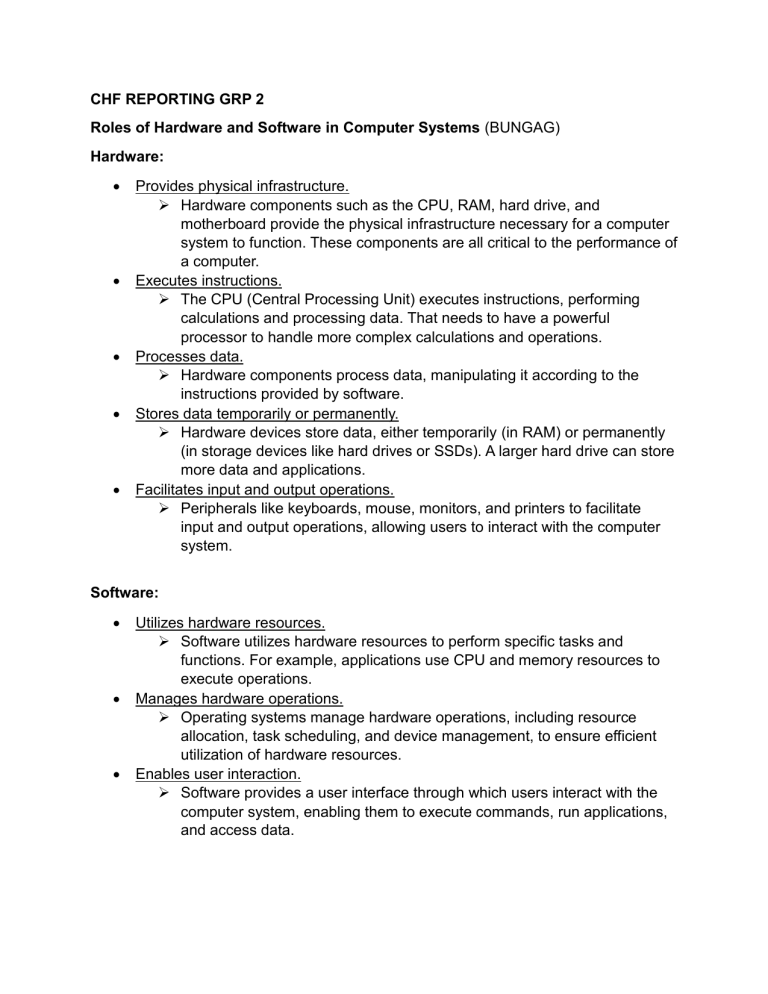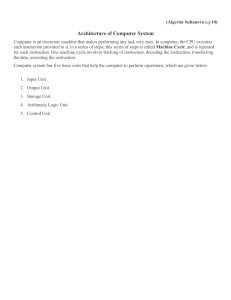
CHF REPORTING GRP 2 Roles of Hardware and Software in Computer Systems (BUNGAG) Hardware: Provides physical infrastructure. Hardware components such as the CPU, RAM, hard drive, and motherboard provide the physical infrastructure necessary for a computer system to function. These components are all critical to the performance of a computer. Executes instructions. The CPU (Central Processing Unit) executes instructions, performing calculations and processing data. That needs to have a powerful processor to handle more complex calculations and operations. Processes data. Hardware components process data, manipulating it according to the instructions provided by software. Stores data temporarily or permanently. Hardware devices store data, either temporarily (in RAM) or permanently (in storage devices like hard drives or SSDs). A larger hard drive can store more data and applications. Facilitates input and output operations. Peripherals like keyboards, mouse, monitors, and printers to facilitate input and output operations, allowing users to interact with the computer system. Software: Utilizes hardware resources. Software utilizes hardware resources to perform specific tasks and functions. For example, applications use CPU and memory resources to execute operations. Manages hardware operations. Operating systems manage hardware operations, including resource allocation, task scheduling, and device management, to ensure efficient utilization of hardware resources. Enables user interaction. Software provides a user interface through which users interact with the computer system, enabling them to execute commands, run applications, and access data. Executes specific tasks and functions. Applications and software programs execute specific tasks and functions based on user input or predefined instructions, such as word processing, web browsing, or gaming. Stores and retrieves data. Software manages data, including storing, retrieving, organizing, and manipulating data, to facilitate various computing tasks and operations. In summary, hardware provides the physical infrastructure and resources necessary for computing operations, while software utilizes these resources to execute tasks, manage operations, and facilitate user interaction within the computer system. Together, hardware and software work in tandem to enable the functionality and operation of a computer system. In summary, hardware and software are both essential components of a computer system. Without either of them, a computer would not be able to function properly. As technology continues to advance, both hardware and software will continue to play critical roles in the development of new and innovative computer systems.


